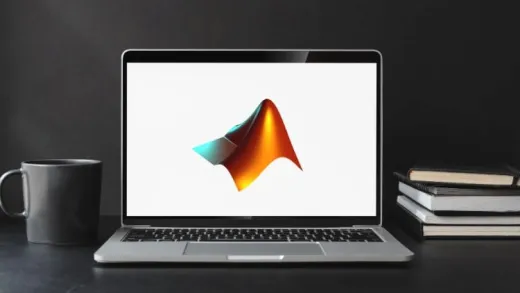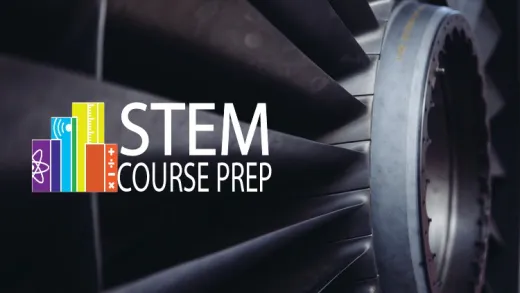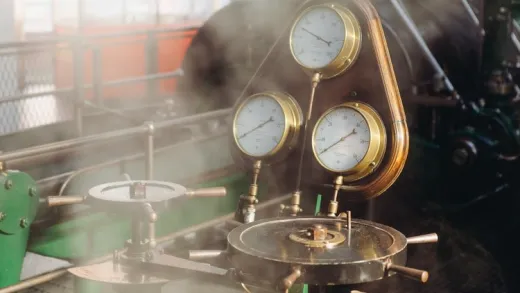Thermodynamics for Engineering Students
About This Course
A Detailed Introduction to Thermodynamics
What is Thermodynamics?
Thermo is the branch of physics that deals with temperature and pressure and how they are related to work and energy. Thermodynamics applies to a wide variety of applications such as combustion engines, heating and air conditioning systems, and jet propulsion, along with many, many others.
Who should enroll in this course?
Engineering students wanting to get a head start on an upcoming Thermo course
Students currently taking Thermo who need extra examples and explanations
Students and professionals who are preparing to take the Fundamentals of Engineering Exam
Anyone with an interest in learning about work and energy
How's this course different from the other online Thermo courses? Why should I enroll in this course?
This course covers all the topics needed to gain an understanding of the basics of thermodynamics. We will cover:
Pressure and temperature
Work and energy of closed systems
Steam Tables
Enthalpy
Compressibility charts
Ideal gas model
Mass flow rates
Work and energy of control volumes
Thermodynamic efficiencies
Entropy
And more!
What sets this course apart from others is the number of worked examples. Being an instructor of Thermodynamics for many years, I understand the need for examples. So many instructors simply show a solution to a problem or only solve it halfway and just assume the student knows how to finish it.
This used to be one of my biggest frustrations as a student so I can relate when I hear today's students complain about this. To prevent this frustration, this course has many, many fully-worked example problems in a range of difficulty levels. I also don't assume you know more than you do. We start with the basics and work our way up to more complex material.
Now, what good is learning material if you can't check your understanding, right? To assist with this, quiz problems are provided throughout the course. To check your work, video solutions of each quiz are provided.
In addition, the outline of the notes I use in the videos is provided as a downloadable file to help you follow along during the course.
Will the material taught prepare me for other courses?
The relationships between pressure, temperature, density, work and energy are fundamental to so many areas. As such, this course will prepare you for more advanced topics like
Combustion
Heat transfer
Fluid mechanics
Propulsion
Aerodynamics
And many others
How's the course structured and what prior knowledge is needed? Do I need a book?
You will have handwritten lectures followed by fully worked examples. There are NO PowerPoint slides used in this course. From my experience students learn best when following along and writing the notes versus just listening to someone talk while staring at a bunch of slides. And of course, throughout the class you will have the opportunity to test your knowledge using quizzes.
The examples we cover do use basic concepts from Calculus such as derivatives and integrals. In order to understand the material and examples you should know these concepts.
As for the textbook, I will be using the 8th Edition of Fundamentals of Engineering Thermodynamics by Moran, Shapiro, Boettner, and Bailey. ISBN: 978-1118412930. Although not required, this book is a great resource and I strongly encourage you to get a copy for yourself. We will be covering the first 6 chapters of this text.
What are you waiting for? There's no better time than now to get started. Enroll today!
Utilize the concepts of work and energy to evaluate control volumes as well as closed systems
Steam tables, entropy, enthalpy and more!
Course Curriculum
9 Lectures
17 Lectures
21 Lectures
20 Lectures
12 Lectures
14 Lectures
Instructor

More Courses By
Nate K.
Its difficult without the documents. I don't have a printer, so my notes take a long time so I have to keep pausing the video, which isn't a bad thing. The video is good quality with a clear voice and easy to understand. Its just that I wish she didn't teach using the notes. Still a good course if it doesn't bother you.
- Helpful
- Not helpful
Jinu T.
If slides would have been used that would be more engaging
- Helpful
- Not helpful
Josh L.
I love this course. Detailed explanation with concise way of teaching.
- Helpful
- Not helpful
Maria D. J. G. H.
The explanation is very clear and easy to understand
- Helpful
- Not helpful
Can K.
very good. im sure it will help me with my exams at college. :)
- Helpful
- Not helpful
S A.
More examples needed
- Helpful
- Not helpful
Aleisha P.
Very good, understood concepts well compared to my uni lecture slides and summaries. I do wish that quantities were measured entirely in SI units rather than English units.
- Helpful
- Not helpful
Edwin W.
Well presented and great format. Really enjoyed the course. This will help in class. Thank you.
- Helpful
- Not helpful
Paidamoyo M.
GREAT INSTRUCTOR, KEEP THIS UP!!
- Helpful
- Not helpful
Your email address will not be published. Required fields are marked *








Jorge D. I. L.
Buena explicación